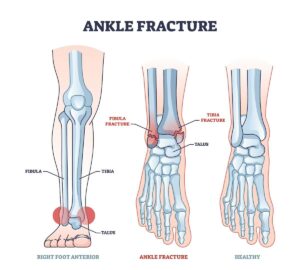Free download: Top 10 Natural & Easy Remedies for Joint Pain from Home. Learn these helpful remedies.
Estimated Reading Time: 8 minutes read
An ankle ligament tear is a common injury that can happen to anyone, often occurring during sports or simple activities like walking on uneven ground. This type of injury can cause significant pain and limit your ability to move your ankle normally.
The severity of an ankle tear varies. In some cases, the ligaments might only be stretched, but there could be a complete tear in more serious situations. When the tear is severe, moving your ankle can become very challenging, and you might even need to wear a special boot to aid healing.
Understanding how to manage an ankle ligament tear is crucial for easing pain and proper healing. The right exercises are essential for strengthening the injured ankle and restoring its movement. This approach helps in recovery and reduces the risk of further injury.
Table of Contents
Symptoms of Ankle Ligament Tear
Ankle ligament tears manifest through various symptoms, which may vary depending on the injury’s severity. The range and intensity of these symptoms often indicate how severe the tear is.
Mild injuries might result in discomfort and slight swelling, whereas more severe tears can cause significant pain, pronounced swelling, and substantial bruising. This variability in symptoms necessitates a careful and tailored approach to treatment and rehabilitation:
- Pain: Often the first and most noticeable symptom, pain can range from mild to severe, depending on the extent of the injury.
- Swelling: The ankle typically swells soon after the injury, which can last for several days.
- Bruising: Discoloration around the ankle area is common, indicating underlying tissue damage.
- Reduced Range of Motion: Moving the ankle becomes difficult, and performing regular activities like walking can be challenging.
- Instability: In more severe cases, the ankle might feel wobbly or unstable, making it hard to stand or walk confidently.
The nature and severity of these symptoms play a crucial role in determining the course of treatment and rehabilitation for an ankle ligament tear.
Causes of Ankle Ligament Tear
Ankle ligament tears are usually the result of specific incidents or conditions that put unnecessary stress on the ankle ligaments. The fragility of the ankle joint makes it particularly susceptible to injuries, especially when it is twisted or forced beyond its normal range of motion. The most common causes include:
- Sudden Twisting Motions: This is a common cause, especially during sports or on uneven surfaces, where the foot can twist abruptly.
- Falls or Missteps: Tripping or falling can cause the ankle to twist or bend awkwardly, leading to a tear.
- Impact or Direct Blow: A direct hit to the ankle, such as during contact sports, can cause ligaments to stretch or tear.
- Pre-existing Weakness: Weakened ankles from previous injuries are more susceptible to ligament tears.
- Overuse: Repetitive activities or overuse of the ankle can gradually weaken the ligaments, making them more prone to tears.
- Improper Footwear: Wearing shoes that don’t provide adequate support or are ill-fitting can increase the risk of an ankle injury.
- Uneven Terrain: Walking or running on uneven ground can lead to unexpected ankle movements that strain the ligaments.
- Physical Condition and Age: Poor muscle strength or balance, as well as age-related wear and tear, can contribute to a higher risk of ankle ligament injuries.
- Sudden Increase in Activity: Rapidly increasing physical activity without proper conditioning can overburden the ankle ligaments, leading to tears.
Exercises for Ankle Ligament Recovery
Ankle ligament tears can significantly impact mobility and daily life. Engaging in specific exercises tailored for recovery is crucial for effective healing, pain relief, and regaining full functionality of the ankle.
A: Initial Strengthening Exercises
Starting with isometric exercises is essential in the early stages of recovery. These exercises help in maintaining muscle strength without putting too much strain on the healing ligaments.
Isometric exercises are effective in reducing swelling and improving blood circulation to the injured area, which aids in faster healing. Additionally, they provide a foundation of strength and stability, preparing the ankle for more advanced exercises.
1. Isometric Ankle Dorsiflexion


- Place one hand on the bottom of the foot, positioned over the ball of foot.
- Gently, pull the foot back into dorsiflexion until a gentle stretch is felt on the back side of the heel and ankle.
- If the stretch is very intense at first, try holding for 5 seconds, then rest. Repeat 10x.
- If the stretch is only mild, then try a longer hold time anywhere from 30-60 seconds.
2. Isometric Ankle Plantarflexion
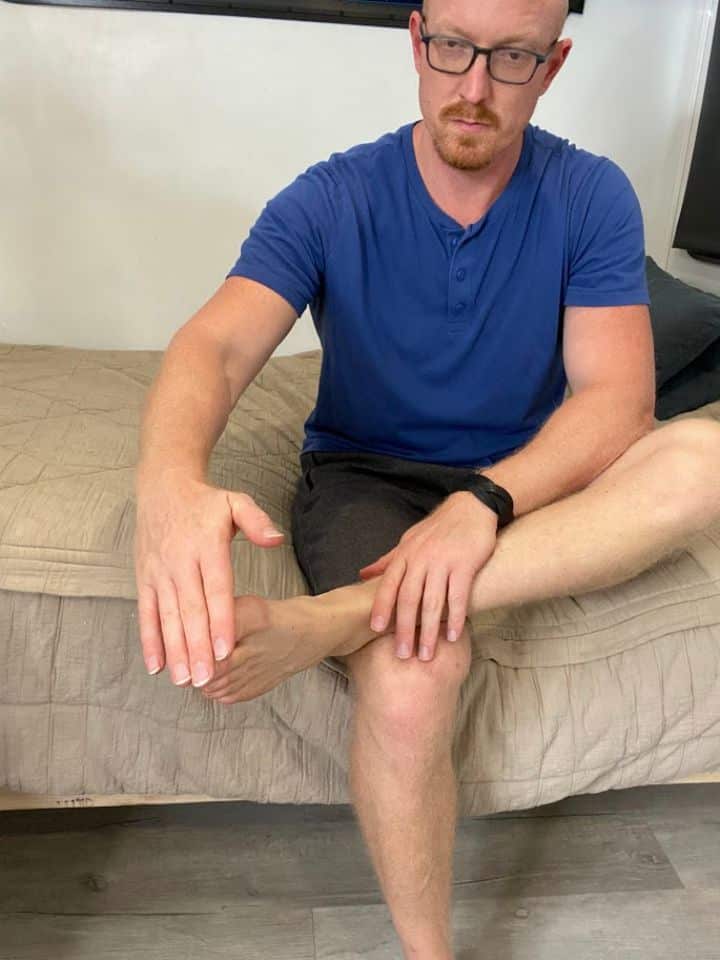

- Place one hand on the top of the foot, positioned on the forefoot near the toes.
- Gently, pull the foot down into plantar flexion until a gentle stretch is felt on the front side of the foot and ankle.
- If the stretch is very intense at first, try holding for 5 seconds, then rest. Repeat 10x.
- If the stretch is only mild, then try a longer hold time anywhere from 30-60 seconds.
3. Isometric Ankle Inversion


- Place one hand on the top of the foot, positioned on the forefoot near the toes.
- Gently pull the foot and ankle into a plantar flexion stretch, then pull slightly inward to pull the foot towards you.
- If the stretch is very intense at first, try holding for 5 seconds, then rest. Repeat 10x.
- If the stretch is mild, try a longer hold time, anywhere from 30-60 seconds.
- Repeat this exercise two more times for a total of three repetitions.
4. Isometric Ankle Eversion


- Place one hand on the bottom of the foot, over the ball of the foot.
- Gently pull the foot and ankle back into dorsiflexion, then pull slightly outward, so the foot moves away from you.
- If the stretch is very intense at first, try holding for 5 seconds, then rest. Repeat 10x.
- If the stretch is mild, try a longer hold time, anywhere from 30-60 seconds.
- Repeat this exercise two more times for a total of three repetitions.
B: Advanced Strengthening Exercises
As the ankle heals, incorporating resistance exercises further strengthens the muscles and ligaments around the ankle. These exercises help in restoring the ankle’s range of motion and improve its stability.
Resistance training is crucial for rebuilding the strength required for daily activities and preventing future injuries. By gradually increasing resistance, these exercises ensure a progressive return to pre-injury levels of activity.
1. Ankle Inversion with a Resistance Band

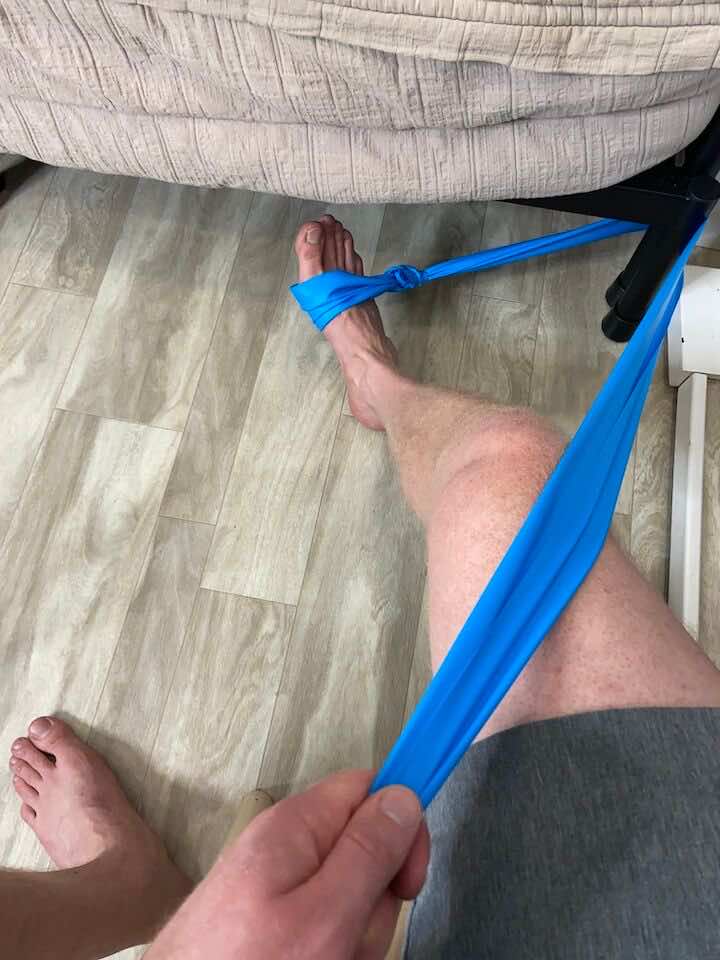
- Sit near a heavy table or sturdy chair that won’t move easily.
- Loop the resistance band over your foot and around the table or chair leg, as shown in the picture above.
- Bring your foot in like you’re angling your ankle toward your other foot, squeeze in, then relax.
- Repeat this movement for 10 repetitions in each set.
- Do 3 sets of this exercise.
Tip: Work on just moving your ankle and not your entire leg when performing this exercise! See if your knee rolls out at all; try to keep it still.
2. Ankle Eversion with a Resistance Band
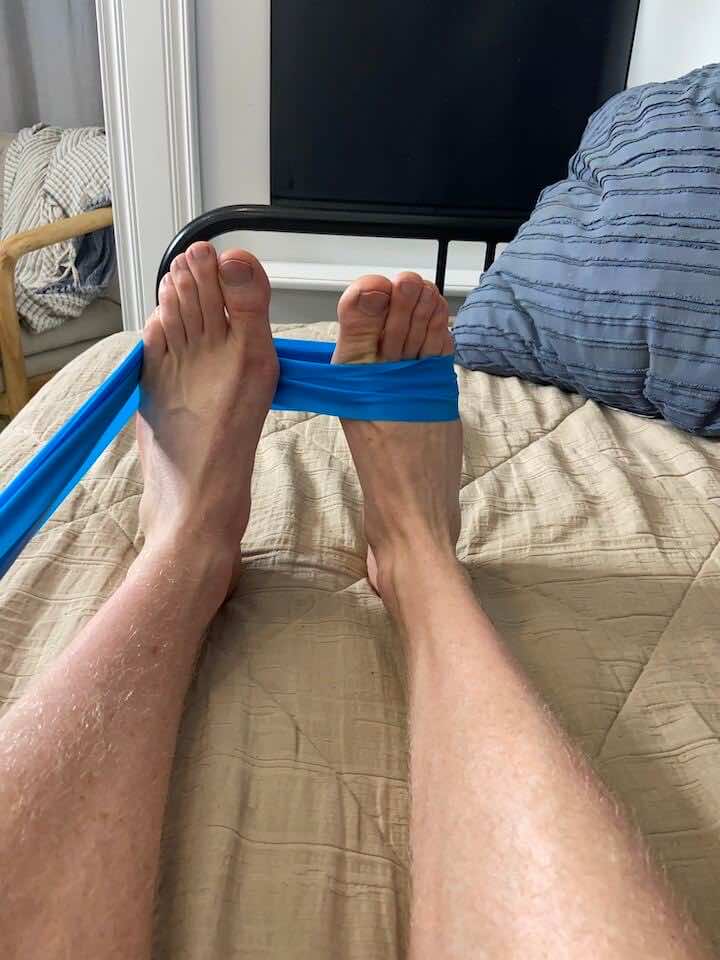

- Starting position: Sitting on the floor or your bed with the legs stretched in front of you.
- Tie a resistance band (light, medium or heavy resistance) around one foot at a time.
- Hold the band with the opposite arm.
- Slowly dorsiflex and evert the ankle, moving away from the band, then return to neutral.
- Repeat 10 repetitions for 3 sets.
3. Ankle Dorsiflexion with a Resistance Band

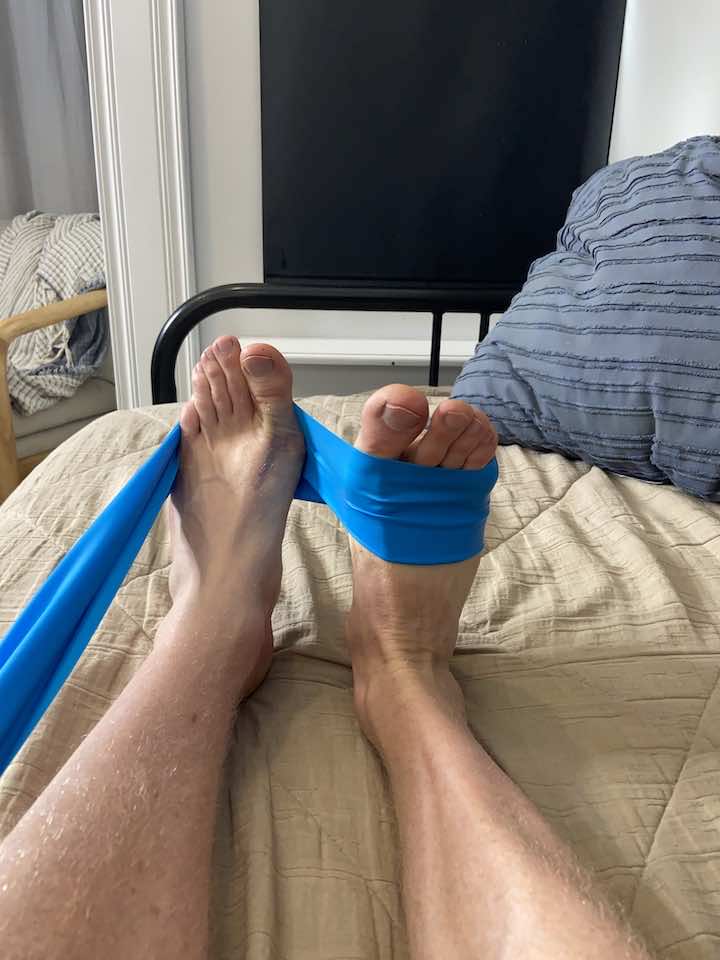
- Lay down on your bed with your ankle off the end.
- Loop the band around your right foot and loop the band around your left foot.
- Point your left foot and hold that position.
- Draw your right foot up like you’re trying to bring your toes to your nose, then relax. Finish the set, then repeat with your left foot.
- Repeat 10 repetitions for 3 sets.
4. Ankle Plantar Flexion with a Resistance Band


- Lay down on your bed with your ankle off the end.
- Loop the band around your right foot and hold onto the other end of the band with your hands.
- Point your toes and squeeze the back of your calf muscles, then relax. Finish the set, then repeat with your left foot.
- Repeat 10 repetitions for 3 sets.
C: Stretching Exercises for Ankle Flexibility and Mobility
Stretching exercises like the calf stretch are vital for maintaining and improving the flexibility of the muscles connected to the ankle. Flexible muscles help reduce the tension on the ligaments, which is crucial for preventing re-injury. Regular stretching helps achieve a more excellent range of motion, facilitating smoother and more efficient ankle movements. This aspect of recovery is crucial for regaining normal ankle function.
1. Calf Stretch
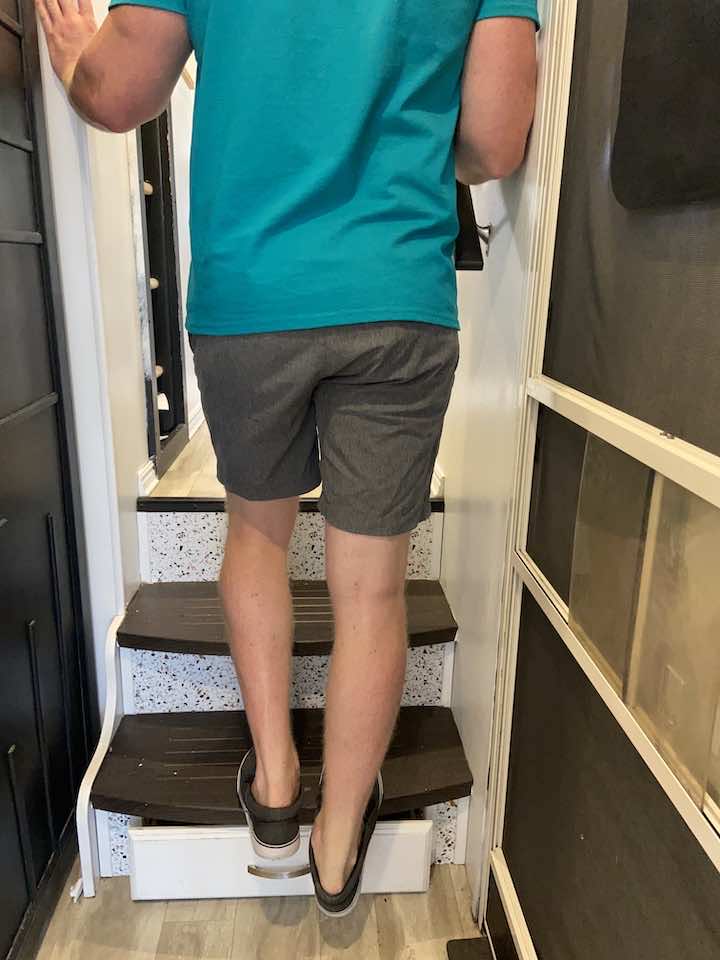
- While holding onto the railing of a staircase, step both feet up.
- Slightly stagger your feet so that the injured heel is hanging off the step.
- Your front leg should bend slightly, while the back (injured) leg’s knee will be straight.
- Hold this stretch for 30 seconds before relaxing.
- Repeat the stretch two more times for a total of three sets.
Conclusion
Recovering from an ankle ligament tear requires a careful and structured approach to exercise. Starting with isometric exercises and progressing to resistance band exercises helps regain strength and stability in the ankle.
Stretching is equally important to maintain flexibility and prevent further injury.
Always consult with a healthcare professional or a physiotherapist before starting any exercise regimen, especially following an injury. Their guidance will ensure that your recovery is safe, effective, and tailored to your specific needs and the severity of your injury.










